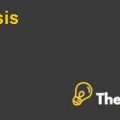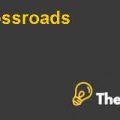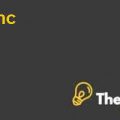
QUESTION 1
Evaluate this potential venture and the progress that Chase has made.
During the year 1999 and the year 2000, there were many hurdles that were faced by Zipcar and there are also many attributes regarding the potential venture. Zipcar worked on the model of car sharing and this format had been successfully proven in most of the other cities such as the Western United States and the Europe. Danielson and Chase had the opportunity to learn about all sort of the challenges that could be faced from the companies from all the other cities. Boston was chosen by the company as the pilot city and the start up city also.
This location was chosen because of the reason that the private ownership in the city was highly expensive and due to this the owners in the city discouraged the ownerships of the cars and on the other hand the public parking was limited. Also the significant part of the target market of the company consisted of the college educated professionals and there were around tens of thousands of such professionals in Boston.
Furthermore, Danielson and Chase have both lived in Boston therefore; they understand all the concerns, challenges and all the experiences of the residents regarding the ownership of the vehicles. Lastly, Danielson and Chase both have established many connections in the Boston area and it is going to allow them the opportunity to begin their own market research.
The real potential of the venture could be seen in the most densely populated areas where in order to commute on a daily basis, vehicles are not needed. However, the people in such areas give significant to an occasional access to a car which does not at all substantiated the expense or the need of owning one. Customers are provided to the access to the cars and they do not have to worry about the maintenance of the car, worry about the parking of the car or take stress regarding the paper work of the car. The expectations of the owners of the company were exceeded by the potential of Zipcar in many ways.
The urban style of borrowing the car was a brand new idea which gave an option to the urban people to take advantage of this opportunity. Although, the owners of the company had faced many challenges and issues at each bump such as the investment needs and the assumption miscalculations but the pivoting methods and the innovative ideas of the owners and their own knowledge created huge hopes for the success of the business.
At the most reasonable cost, a new method of transportation was provided to the customers of the company and a huge progress has been made by Chase in developing this venture. Overall, the business is a huge success based on the philosophy of the owners and this success is more evident especially in the urban areas.
QUESTION 2
What is the business model, and how has it changed between December 1999 and May 2000? What do the data from actual operations in September say about how the business model is playing out in practice? Do you think the business model will change with the recent purchase of the company by Avis? Explain your answer.
The first business model of the company was based upon the small expenses for per hour calculations and per mile calculations ($1.5 per hour and 0.40 cents per mile) and the business model had focused and emphasized upon the large annual fee of $300. Different assumptions and different pricing structures have been used by the company to focus on the above numbers. The billing that would be recorded for each customer would be recorded on the basis of the blocks of the time that would be chosen by the customers for using the car and each customer would then be billed for their respective blocks of time.
However, all the assumptions on the basis of which this business model was developed turned out to be wrong and as a result Chase was forced to change her business model for the company completely. The main factor that was deterring the customers of Zipcar to use the services of the company was the annual cost and Chase as a result decided to reduce the total annual cost. Therefore, in the new business model although the charge per mile and the chare per hour were both increased so that the company could cover the costs of the cars but the annual cost was reduced to about $70...................
This is just a sample partial case solution. Please place the order on the website to order your own originally done case solution.











